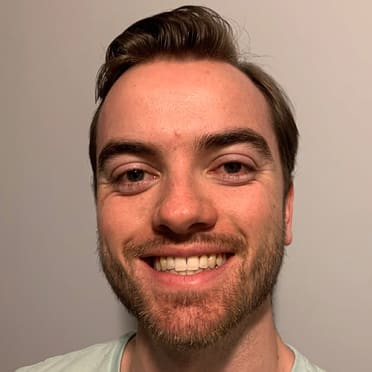Bloom analyzes haul from Benintendi deal
The February trade that sent away Andrew Benintendi from the Red Sox might feel like ages ago, but it was only wrapped up this past week. With Boston’s return now complete, the deal offers a glimpse into the organization’s philosophy of balancing present and future value.
Fostering that balance means walking a “tightrope,” as chief baseball officer Chaim Bloom put it on Sunday. All-or-nothing swings on win-now trades bring great risk, where as a trade that serves the Red Sox at multiple organizational levels can pay off over several seasons.
“I think one of the critical things for a team in a [big] market like ours, just because we have the ability to swim in the deep end of the pool, doesn’t mean that’s the only thing we could pay attention to,” said Bloom, who formerly worked in the Rays’ front office. “We actually have the ability to dominate every area of the battlefield, every area of talent acquisition and talent development.
“And we’re not doing our jobs if we’re ceding any ground to other clubs, thinking that certain types of prospects or certain players are only the domain of teams in certain markets.”
Take this Benintendi deal, for example. Boston gave up the 26-year-old Benintendi -- a prime-aged player and former AL Rookie of the Year runner-up -- for a player they hope can help them in the short term (26-year-old Franchy Cordero) and four prospects at varying levels of development to assist later on.
So far, Cordero has been a non-factor for the Red Sox. He posted a .501 OPS for them in 34 games and is now with Triple-A Worcester. Benintendi, meanwhile, has a .782 OPS in 53 games for the Royals.
On that level, the trade doesn’t look great for the Red Sox. But it goes much deeper, and some of Boston’s return may not resonate with fans for years.
“The talent and what we ultimately see as a potential ceiling and the chances of getting there, I think that has to matter more than the particular level that a player is at,” Bloom explained. “Especially in a deal like this, where there are a number of pieces coming back, we really could look at a number of different options. But if we only focus on one area of our system, at some point we’re going to pay the price for that.”
Three of the pieces that came back were announced Friday: Minor League right-handers Grant Gambrell and Luis De La Rosa from the Royals, as well as Minor League outfielder Freddy Valdez (now ranked by MLB Pipeline as the Red Sox's No. 21 prospect) from the Mets. Bloom gave an assessment of all three individually.
Gambrell: “This is a guy who, because of the strength that he has, has a chance to be a workhorse in some capacity. Obviously still a long way to go for him. He was in High-A for the Royals, so I anticipate him being at the same level with us as we get to know him. But he’s been a starting pitcher and has a chance to continue in that role all the way up to the big leagues.”
De La Rosa: “Loose, projectible, very athletic. He’s got certainly a developing arsenal. Again, he just turned 18. He’s a long way away. There’s a lot there to work with. This is a really great raw resource to give to our pitching-development group and allow them to mold.”
Valdez: “We got to see him a little bit in extended [spring camp]. The tools are all there, obviously, to be a power-hitting corner outfielder. A long, long way from that right now, but all the tools are there.”
One common theme Bloom repeated for all three prospects is that they’re a “long way” from realizing the potential the Red Sox believe they have. But, again, that’s part of the tightrope teams walk in an attempt to satisfy today and tomorrow’s goals.
“We need to have prospect depth at all levels of our system,” Bloom said. “And the more of that you have, the more chances you give yourself for something to go right.”
